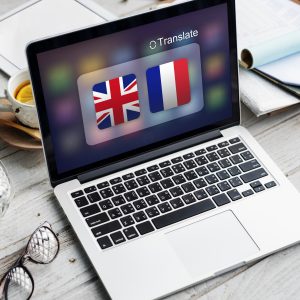 For quite some time now, Machine Translation has been a powerful linguistic tool that is being used by a wide range of sectors to assist with their translation goals, particularly as it contributes to saving time and money. However, it still requires the touch of human translator-editors to refine its “raw” output.
For quite some time now, Machine Translation has been a powerful linguistic tool that is being used by a wide range of sectors to assist with their translation goals, particularly as it contributes to saving time and money. However, it still requires the touch of human translator-editors to refine its “raw” output.
What Is Machine Translation?
Machine Translation (MT) is a process whereby a computer program translates text without any human involvement. It is also called automated translation (AT).
How Does Machine Translation Work?
Machine translation uses algorithms that work with large amounts of source and target languages. The two are compared together then matched against each other to produce a translated language.
What Are the Types of Machine Translation?
These are the four main types of machine translation:
- Statistical Machine Translation (SMT)
- Rule-Based Machine Translation (RBMT)
- Hybrid Machine Translation
- Neural Machine Translation
Statistical Machine Translation (SMT)
SMT is a type of machine translation that works by using statistical models derived from the analysis of large volumes of bilingual text. It determines the connection between a word from a source language and a word from the target language.
Google Translate is one such product that uses Statistical Machine Translation.
SMT is the most popular and most used type of machine translation. This is because SMT doesn’t depend on rules like the Rule-Based Machine Translation below. Therefore, you can construct SMT systems in less time as compared to RBMT systems.
Another advantage of SMT is that the training data needed to run it is readily available online due to plenty of multilingual content that’s published.
However, while SMT is good for basic translation, its disadvantage is that it doesn’t factor in context while translating. This can make some of its translations erroneous.
Rule-Based Machine Translation (RBMT)
RBMT works by translating using grammatical rules. It does a grammatical analysis of the source and target languages and then generates a translated sentence.
However, due to its heavy reliance on vocabulary, its efficiency is achieved after a long time, requiring extensive proofreading.
Hybrid Machine Translation (HMT)
HMT is a combination of RBMT and SMT. One of its biggest advantages is its translation memory, which improves its translation quality.
However, HMT translations require lots of editing by human translators.
Neural Machine Translation (NMT)
NMT works based on artificial neural networks that are inspired by biological models; it adapts and learns in real time. NMT is the most advanced type of machine translation.
What Are the Benefits of Machine Translation?
Saves Time
Machine translation can help you save time when translating documents. It can translate entire texts in seconds.
Reduces Costs
You get lower costs since you don’t need to hire many translators. Machine Translation does the bulk of the work, and afterward you only need a few human translators to post-edit the outcome of the translation engine.
Memorizes Terminology and Structure
Machine translation can memorize terms and syntax. This ability makes it faster since it can reuse its memory wherever it fits.
How to Improve a Machine Translation Product
Any text you’re translating needs to be clearly written to avoid confusing your machine translation engine. You should avoid writing the source language in a way that will confuse your output text. Therefore, consider doing the following:
- Use simple, well-structured, short sentences
- Avoid jargon, slang and ambiguous words
Expectations, Reality and Options
The evolution of Machine Translation has been so stunning that the present reality of its outcome is sure to surprise and go way beyond many people’s expectations. That said, if what you’re looking for is to get the best of both worlds (AI and human), you’d be wise to reach out to a professional translation services provider who can offer advice and best practices on automated translation as well human translators who specialize in post-editing of MT.
